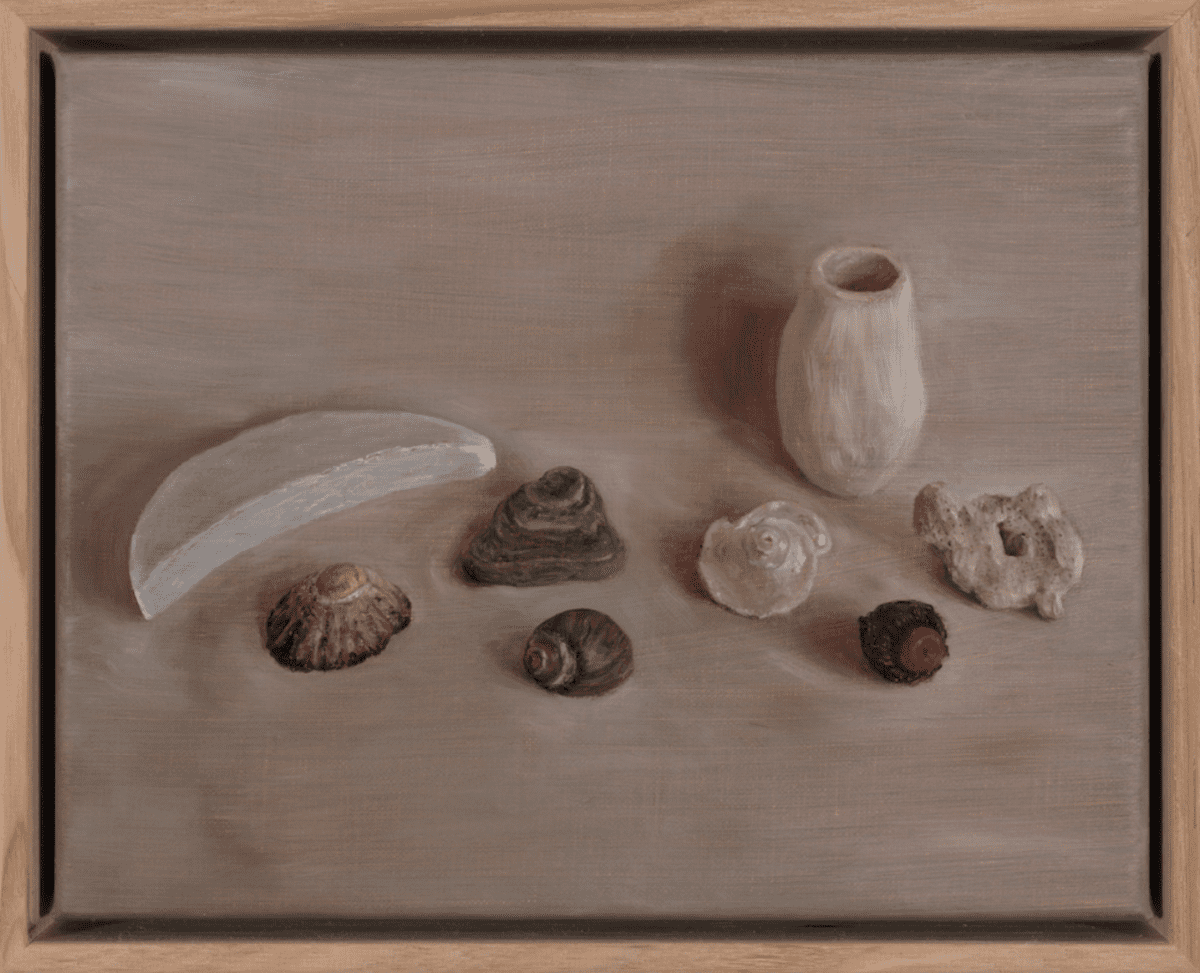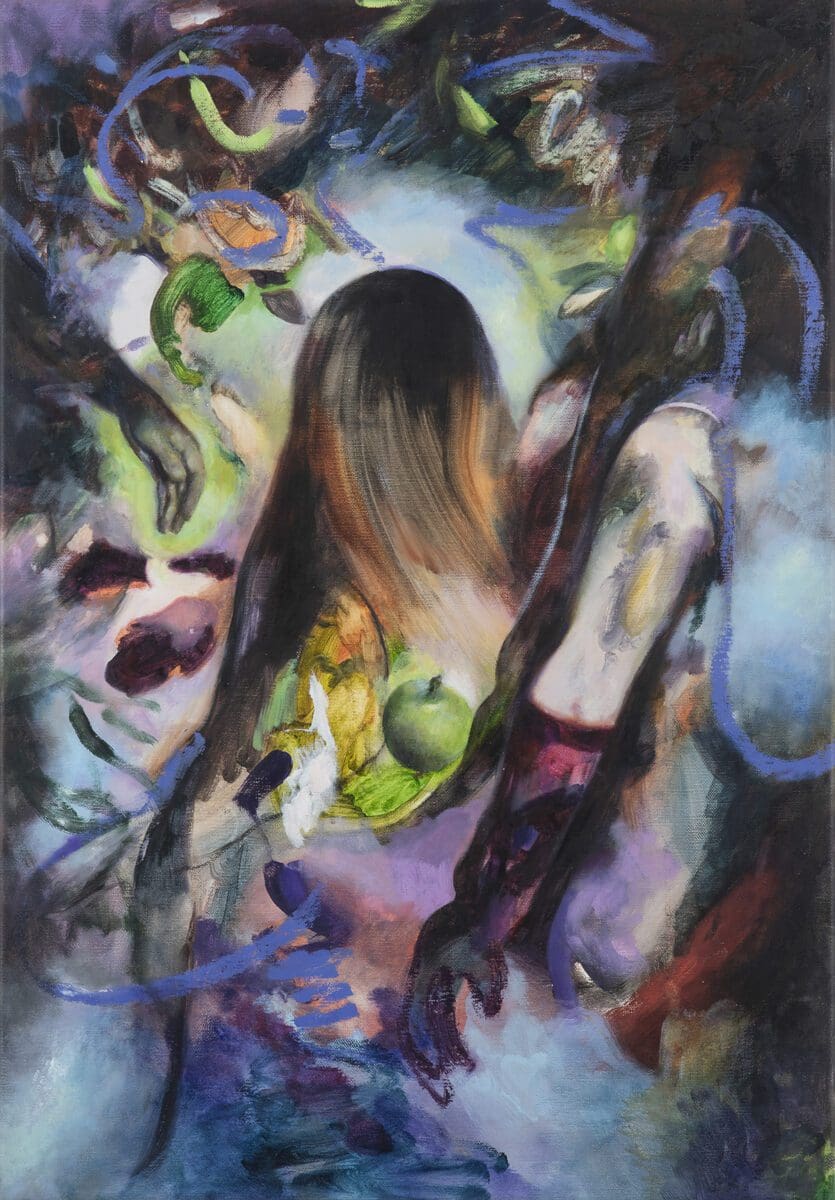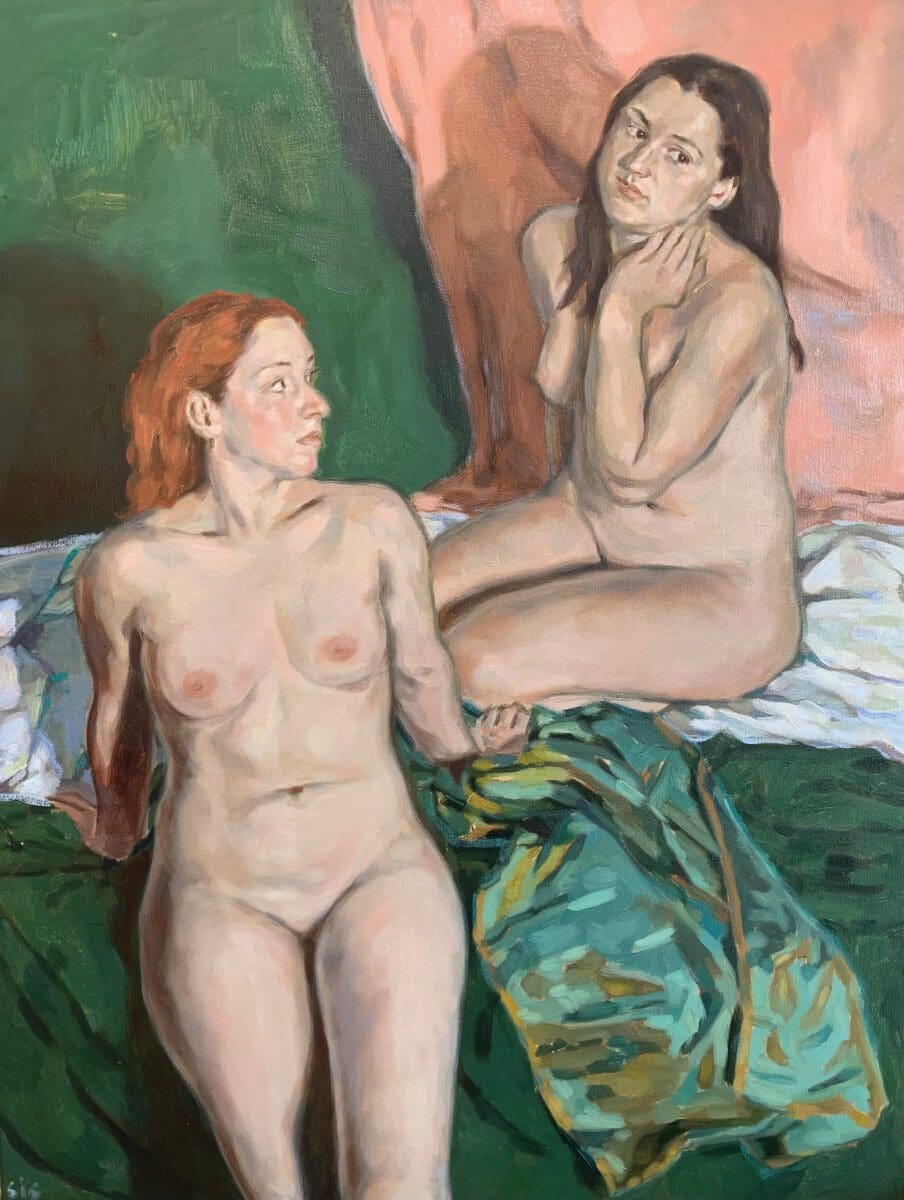
Piercing the veil
A new exhibition at Buxton Contemporary finds a rich complexity in the shadowy terrain between life and death.

Sis Cowie, Evening Snack, 2023, oil on canvas, 71cm x 73.5cm.

Eliza Gosse, She’ll Be Happier With A Hoover, 2022.

Lucy Roleff, After the beach, 2022, oil on linen, 22cm x 27cm.

Jo Bertini, Land of Journeys End, oil on Belgian linen, 122x162cm.

Chelsea Lehmann, Gather Your Fruits, 2022, oil on board, 97 x 70cm.

Sis Cowie, Are you jealous?, 2022, oil on canvas, 91cm x 71cm.

Lucy Roleff, Abalone Shell on a Windowsill, 2022, oil on linen, 25 x 32 cm.
The idea that all women’s work is intrinsically feminist has been historically transient; ebbing and flowing with each political wave over time. But now, more than ever, with increased focus on bodily autonomy, the surging cost of living further emphasising the wage gap, and the recognition of true intersectionality, the personal is once again proving itself inherently political.
When MARS Gallery curator Andy Dinan approached the women artists in A Female Gaze, the only brief given was the title of the show. “I simply asked each artist to interpret the phrase how they saw fit within their own practice,” she explains. “I want their work to be true to their own voices and I want their work to scream or whisper as they wish.”
The voices heard are those of seven female artists: Chelsea Lehmann, Jo Bertini, Sis Cowie, Eliza Gosse, Dani McKenzie, Marisa Mu, and Lucy Roleff. Though predominantly all painters, Eliza Gosse is also presenting work cut from carpet tile samples, a medium fitting within the architectural and domestic scenes she depicts. Her piece, Marion’s Welcome Mat, is inspired by influential mid-century interior designer Marion Hall Best, and the way Best carved out a space to exist professionally and creatively in Australia throughout the early half of the 20th century—a time when the industry was ostensibly male dominated. For Gosse, it’s about “paying tribute to women in the arts who paved the way” and enabled her to create today.

Dani McKenzie’s practice is, in a similar vein, architecturally and domestically focused at first glance. “My work examines aspects of everyday life within the city, what it means to be a stranger living among strangers,” she explains. Through her flaneuse-like gaze, McKenzie is painting her local florist, Effie Rose, whose St Kilda store has been depicted in McKenzie’s work before.
“I walked past the store for years, casually glancing inside, and always thought it was beautiful,” says McKenzie. “One day I messaged her [Rose] and asked if I could paint it, and thankfully she agreed. The first painting I made was exhibited at MARS Gallery in 2022. It was painted from the perspective of a passer-by, from the outside of the store, with Effie working after hours inside, and her little pug companion sitting on the front doorstep. This is the second, and last, painting I will make of the store. Rather than being an outsider looking in, here the viewer is invited inside to engage more directly with the florist in her everyday environment.”
All the artists I spoke to, while varied in their subjects, had a similar perspective on their interpretations of the theme; that while their work may not be explicitly feminist, their female identity could not, and should not, be extricated from their art. Womens’ perspectives of the world have been historically lacking, so every perspective presented today adds to a greater representation within the arts. As the Guerrilla Girls stated, “You’re seeing less than half the picture without the vision of women artists and artists of colour.”
In an environmental shift in the show, Jo Bertini has spent decades travelling the world, sleeping under the stars, and painting the deserts she visits. She spent 10 years working as an expedition artist in Central Australia—and was one of the first female artists to do so. She describes how typical historical depictions of this landscape have an atmosphere of futility and desolation, focusing on a lack of resources or the inability to be farmed. The conventional Western gaze sees the desert as land to be conquered, and made useful.
As Bertini explains, “In my experience, and often the feminine experience, particularly as I work with Indigenous communities, there’s a different approach to landscape. It’s much more about the land being a motherland, a nurturing place, a place of peace, and stillness, and sanctuary. It has its own purpose and usefulness above and beyond human needs.”
It is not, however, Bertini’s intention to overtly politicise landscape, and she does not perceive her art as an expressly female depiction of the desert. She describes the strongest reactions to her work being the how rather than the what. A woman living in remote communities, without access to a shower or a toilet, menstruating out there in the desert alone, is not very ‘ladylike’.
For many female artists, the most feminist thing about their work is not the work itself but the fact that they created it. Bertini describes being an artist as a compromise for many women, who still undertake most of the domestic labour regardless of their professional situation: “When you work, as a woman, it’s a political act.”
A Female Gaze
MARS Gallery (Melbourne VIC)
1 March—25 March
This article was originally published in the March/April print edition of Art Guide Australia.